Author: Zhao Qirui
Editor: Zhao Yidan
In the global regulatory changes of the post-FTX era, Singapore has fundamentally reshaped its digital asset strategy. This transformation marks a shift in its national strategic focus from an inclusive retail speculation "Crypto Haven" to a "global institutional asset fortress," with the core tactic being to precisely filter and guide capital towards institutional-grade, highly compliant applications—especially the tokenization of real-world assets (RWA)—under stringent regulatory barriers.
To achieve this goal, the Monetary Authority of Singapore (MAS) is adhering to the principle of "embracing digital asset innovation while rejecting cryptocurrency speculation," deliberately creating a core tension: on one hand, it champions the "Project Guardian," collaborating with global financial giants like JPMorgan and HSBC to actively seize the dominance of next-generation financial market infrastructure (FMI); on the other hand, it implements stringent "patch" policies for digital payment token (DPT) service providers, such as strict customer asset segregation and a ban on retail lending, complemented by a new cross-border regulatory framework for digital token service providers (DTSP), compressing financial stability risks and regulatory arbitrage opportunities to the limit. The ultimate goal of this strategic trade-off is clear and resolute: to abandon the crown of a "retail trading center" and fully strive for dominance as the global "institutional innovation and governance center."
This strategic shift is not a distant blueprint but an immediate reality catalyzed by a series of key policies—the urgency defined by looming deadlines on the calendar, including the officially implemented MAS stablecoin regulatory framework and the mandatory enforcement of the DTSP cross-border framework by June 30, 2025.
Therefore, this article aims to provide an indispensable operational and strategic guide for four core decision-makers globally, spanning approximately 50,000 words: it will precisely navigate global project teams and enterprises on how to traverse the stringent technical risk management (TRM) requirements and "hidden rules" of licensing approval set by MAS; it will deeply reveal the "moat" value created by strict regulations for investment institutions and capital allocators, marking the investment coordinates of high-potential RWA projects; it will construct a rigorous legal argument for legal and compliance professionals regarding the definitions in the Payment Services Act (PSA) and the Securities and Futures Act (SFA), as well as the latest case law from the Singapore International Commercial Court (SICC); and it will provide a national-level strategic analysis template for policy researchers to decode how Singapore achieves a dynamic balance between financial innovation and risk control.

The RWA Research Institute proudly releases the "Global RWA Compliance Landscape Overview" series of in-depth research reports. The "Global RWA Compliance Landscape Overview Series" aims to study the regulatory legal policies, major regional projects, protocol technology construction, and architectural design of cryptocurrencies in major regulatory countries/regions such as the United States, Hong Kong, Singapore, Dubai in the UAE, Thailand, and Germany, striving to provide readers with profound and comprehensive insights.
This is thethird article** in our series. This article is relatively long and will be delivered in three parts.**
Part One
Introduction
1.1 Singapore's National Financial Technology Strategy
To accurately understand every action taken by Singapore in the digital asset field—whether it is the strict retail restrictions on cryptocurrencies or the active acceptance of compliant stablecoins—it must be viewed within a broader, more forward-looking context. These actions are not isolated market responses but are an inevitable extension of its long-term, systematic, and ambitious "Smart Financial Center" national strategy. The core of this strategy is to build a multi-dimensional innovation system encompassing capital, talent, ecology, and infrastructure, driven directly by national will, thereby positioning Singapore as an indispensable core node in the global fintech landscape.
Policy Infusion
In the process of promoting fintech innovation, the role of the Singapore government goes far beyond that of a traditional "regulator"; it acts as an active "catalyst" and "chief venture capitalist." The most direct manifestation of this national will is realized through continuous, large-scale fiscal investments.
The core driving force is the Financial Sector Technology and Innovation (FSTI) program, led by the Monetary Authority of Singapore (MAS), aimed at accelerating and strengthening innovation in the financial sector. Since the launch of FSTI 1.0 in 2015 with a five-year commitment of S$225 million, this investment has continued to increase and upgrade. By 2015, the Financial Sector Development Fund (FSDF) had already awarded S$340 million through the FSTI program to promote technology adoption and innovation;
The latest FSTI 3.0 program was updated in August 2023, committing to invest up to S$150 million over the next three years, focusing on supporting emerging technology projects or regionally relevant projects. This program includes new tracks, such as the "Innovation Acceleration Track," to support innovative fintech solutions brought by emerging technologies like Web 3.0; and the "ESG FinTech Track," to meet the financial industry's needs for ESG data, reporting, and analysis. MAS even allocated an additional S$100 million for this program in July 2024, specifically to support financial institutions in building capabilities in quantum computing and artificial intelligence (AI).
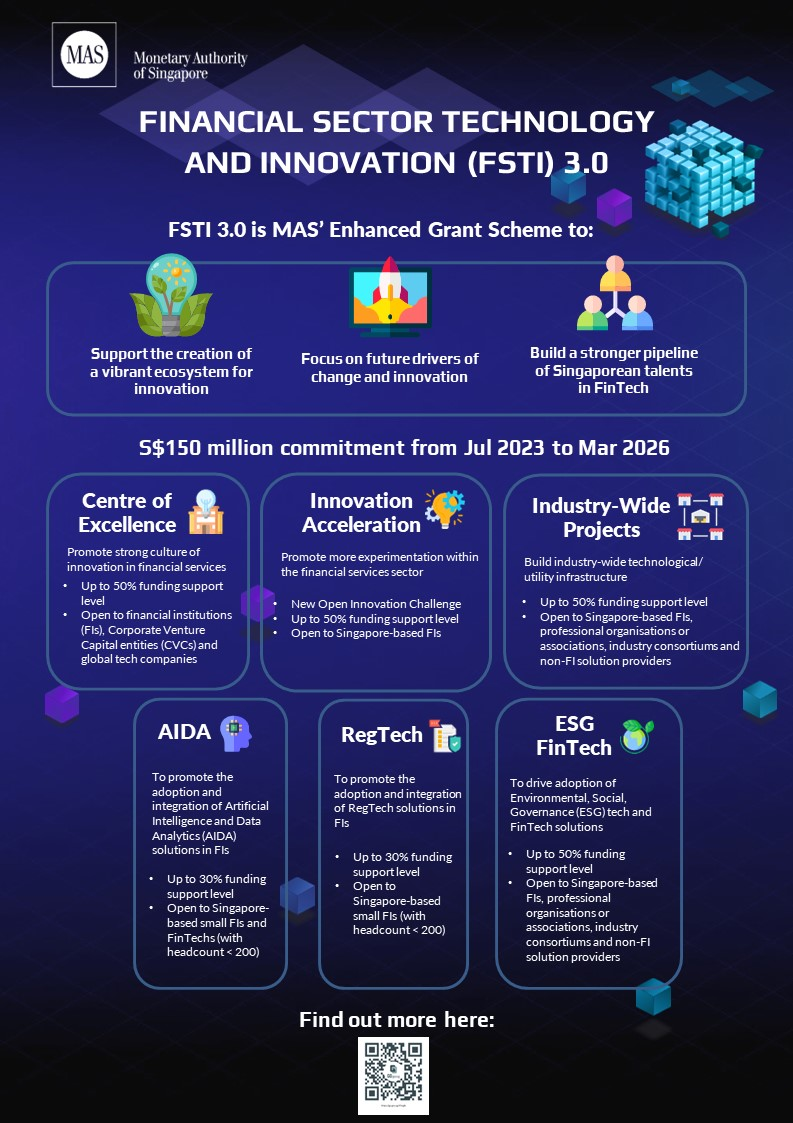
This systemic investment of "real money," coupled with long-term corporate income tax exemption policies such as Pioneer Certificate Incentives/Development and Expansion Incentives (PC&DEI), clearly indicates that Singapore is not only a regulator setting the rules but also a chief venture capitalist shaping the direction of industry development and reducing early innovation risks through fiscal incentives.
Ecosystem Construction
This powerful fiscal force is precisely injected into an innovative ecosystem aimed at creating physical density and intellectual chemical reactions.
The strategic stage of this system is the largest annual fintech event in the world—the Singapore FinTech Festival (SFF). This event, which gathers over 65,000 participants from 134 countries and regions, more than 900 speakers, and over 600 exhibitors (based on 2025 data), has become the core platform for Singapore to set the agenda and project influence globally.
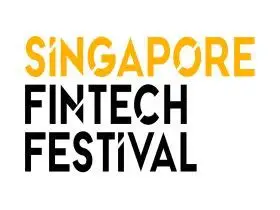
Here, MAS announces significant policies and connects senior decision-makers with major capital providers through activities like the "Capital and Policy Dialogue" (CMPD), while also hosting the "Founders Stage" and "Global FinTech Hackcelerator" to support early innovation and entrepreneurial spirit.
Meanwhile, the 80 Robinson Road (80RR) innovation center, co-built by Hongkong Land and the Singapore FinTech Association (SFA), accelerates collaboration between startups, capital, and regulators by providing affordable physical space in the central business district. This carefully constructed ecosystem has successfully shaped Singapore into a global "gravity field," efficiently connecting projects and capital through platforms like MATCH, attracting top early-stage investors like Antler. As a result, Singapore absorbed 59% of fintech investment in the ASEAN region in the first nine months of 2023, forming a self-reinforcing positive cycle among capital, projects, and talent, significantly enhancing Singapore's position as a fintech hub in Asia.
Talent Development and Recruitment
A vibrant ecosystem filled with capital and opportunities inevitably generates a huge demand for the most critical production factor—intellectual capital. Singapore understands this well, adopting a dual-track strategy that emphasizes both "internal cultivation" and "external recruitment."
Internally, it collaborates with top institutions like the National University of Singapore (NUS) to offer a Master of Science (Digital Financial Technology) program (MSc DFinTech), helping students build a solid foundation in computing and finance, with tracks in computational technology, financial data analysis and intelligence, and digital financial trading and risk management. It also partners with local polytechnics to establish institutions like the Asian Institute of Digital Finance (AIDF), aiming to train 2,500 new industry talents annually, with the goal of leading fintech education and research.
Externally, it takes a more proactive approach, precisely "recruiting" those market-validated technology leaders and business magnates through high-threshold visa programs like the Tech.Pass and Overseas Networks and Expertise Pass (ONE Pass).
The goal of Tech.Pass is very clear: it attracts not ordinary technical personnel but technical elites and management experts who have held leadership positions in well-known tech companies valued at over $500 million or with financing exceeding $30 million, capable of bringing core experience and global networks to the local ecosystem. Tech.Pass holders enjoy significant flexibility, allowing them to apply without employer sponsorship and engage in multiple economic activities simultaneously, such as founding and operating one or more tech companies, serving as employees, consultants, directors, or teaching at local higher education institutions.
Additionally, the Overseas Networks and Expertise Pass (ONE Pass) was launched in 2023 to attract top talent from all industries (including science and technology), offering a longer five-year validity and high work flexibility. These visa programs aim to establish a sustainable, pyramid-shaped talent hierarchy. Through Tech.Pass and ONE Pass, Singapore is no longer passively waiting for talent but is actively recruiting those who have been validated to bring core experience and technical know-how to the local ecosystem.
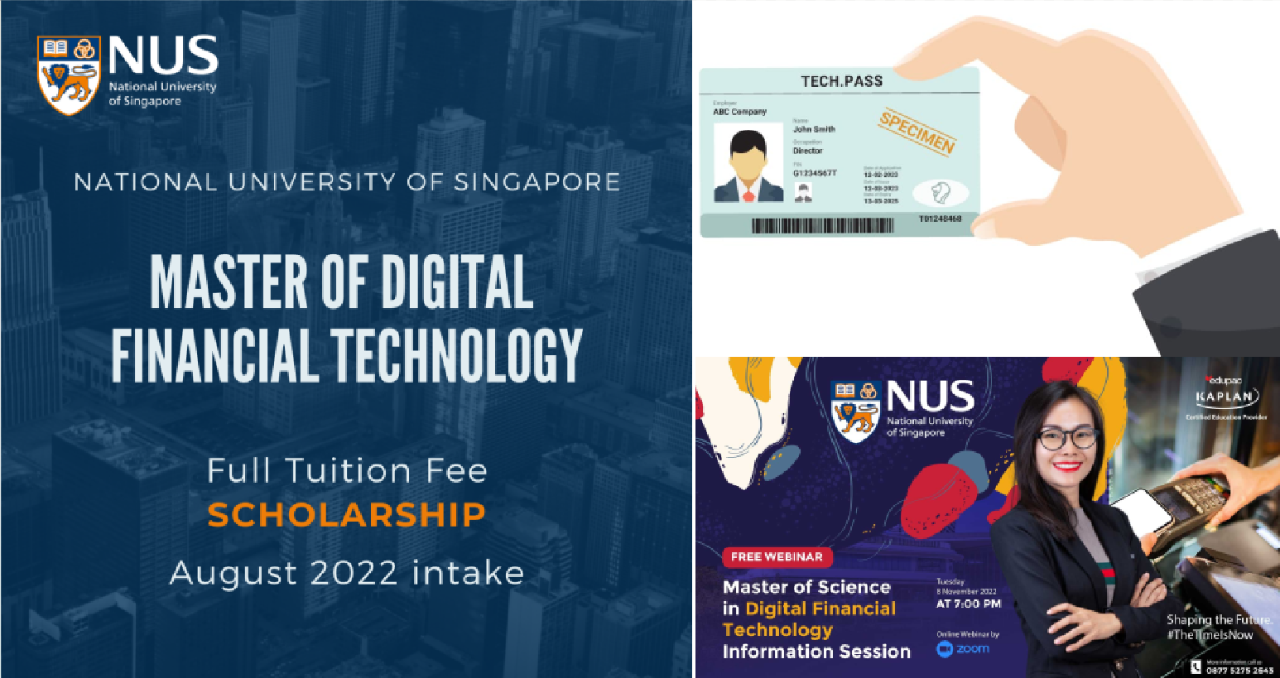
"Build the road before running the car"
This entire grand superstructure composed of capital, community, and talent operates solidly on a digital infrastructure that has been proactively laid out by the state.
Singapore's strategic patience is reflected in its deep-seated thinking of "building the road before running the car." As early as 2016, the Project Ubin, led by MAS, began foundational explorations into using distributed ledger technology (DLT) for the clearing and settlement of payments and securities. This early practice accumulated valuable regulatory insights for Singapore's subsequent regulation of more complex central bank digital currencies (CBDC) and RWA tokenization. The subsequent Project Orchid continued this exploration. Meanwhile, the announcement of up to five new digital banking licenses (including digital full bank licenses and digital wholesale bank licenses) as early as 2019 represented a far-reaching strategic layout. The true purpose of this move was not merely to introduce competition but to actively embrace a new business paradigm, using it as a "catalyst" to compel the entire traditional financial system to undergo a deep digital transformation.
Therefore, Singapore's cautious yet forward-looking regulatory path in the digital asset field—actively embracing institutional-grade asset tokenization (RWA) while implementing strict retail restrictions on speculative cryptocurrencies—is by no means coincidental; it is an inevitable result of its multi-dimensional, comprehensive national fintech strategy.
These four pillars—sustained and increased national fiscal investment, a globally scaled ecological platform, an elite talent strategy, and forward-looking infrastructure construction—are not isolated policies but a tightly coupled, mutually reinforcing national-level system engineering: sustained and increased national fiscal investment (FSTI) transforms the government from a regulator into an innovation catalyst; a globally scaled ecological platform (SFF and 80RR) provides an indispensable gravity field for capital, projects, and ideas to exchange; an elite talent strategy (Tech.Pass and educational cooperation) ensures a continuous supply of intellectual capital necessary for innovation; and forward-looking infrastructure construction (Project Ubin and digital banking) secures future market dominance by proactively deploying underlying technologies.
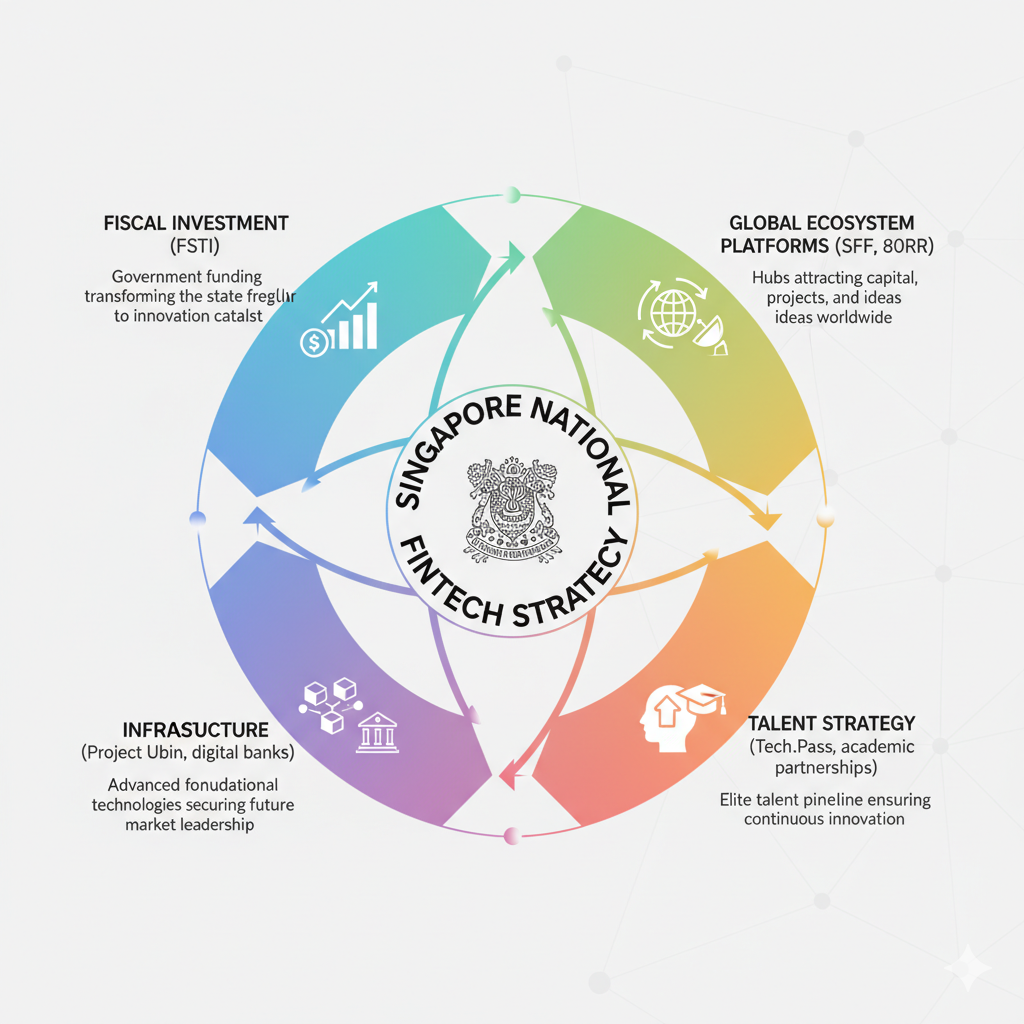
It is this thoughtful top-level design that provides a solid logical foundation and strategic support for the seemingly contradictory "dual" regulatory concept we will delve into next, and lays an extremely solid foundation for Singapore's quest for the next generation of global institutional financial innovation and governance center.
1.2 The Philosophy and Cornerstone of Regulation
Under the grand national fintech strategy, Singapore is able to undergo a cautious yet efficient strategic transformation, with its success resting on the mature and unique regulatory philosophy of the Monetary Authority of Singapore (MAS).
MAS integrates the functions of a central bank, comprehensive financial regulation, and financial development. Its regulatory actions are by no means passive or fragmented responses but follow a set of internally unified and logically coherent philosophical principles. This philosophy constitutes the three main pillars of its regulatory framework, collectively revealing how MAS identifies, measures, and guides any financial innovation through a rigorous thought process.
Technological Neutrality
The first step in this thought process is identification through the principle of "technological neutrality." This serves as the first "sorting gate" for MAS when faced with a multitude of innovations, with the core being that the focus of regulation is always on financial activities and their economic substance, rather than the underlying technology itself. MAS does not create laws for "blockchain" or "distributed ledger technology" (DLT) itself; instead, it adopts the principle of "substance over form," penetrating the superficiality of technological carriers and focusing on the economic activities that the technology supports.
Just as regulators do not regulate the "internet," but will regulate "e-commerce" and "online payments" that occur on the internet, MAS does not regulate technical terms like "smart contracts" or "digital tokens," but rather the financial activities such as "payment services," "asset custody," or "securities issuance" that utilize these technologies.
The implementation of this principle directly determines which laws a project will fall under:
If the token has securities attributes, if the structure, characteristics, and rights conferred to the holder of a digital token give it the attributes of traditional financial instruments (such as equity, debt, or collective investment scheme units), it will be recognized as a "capital market product," and the issuance, trading, and intermediary services of that token will be subject to strict regulation under the Securities and Futures Act (SFA);
If it is primarily used for payment, then the entity providing related services must comply with the core requirements of the Payment Services Act (PSA). Therefore, project teams cannot use technological novelty as an excuse to evade regulation; assessing the economic substance of their tokens is the starting point for all compliance paths.
Risk-Based Approach
After identifying the financial nature of the activities, the thought process moves to the second step: measurement based on the "risk-based" principle. This principle is MAS's wisdom for allocating regulatory resources and avoiding a "one-size-fits-all" approach, with the core being that the intensity, depth, and complexity of regulation must be proportional to the potential risks posed by a business.
MAS classifies financial institutions and assesses their systemic importance through its Comprehensive Risk Assessment Framework (CRAFT), as high-impact institutions, if they encounter problems, can have a destructive impact on the entire financial market. This principle is vividly reflected in the PSA licensing system in the digital asset field. For standard payment institutions (SPI) whose business scale is below the threshold, MAS has only set a capital requirement of S$100,000; however, once the average monthly transaction volume of a single payment service exceeds S$3 million, and it upgrades to a major payment institution (MPI), the regulatory "firepower" will increase exponentially, with capital requirements jumping to S$250,000.
More importantly, MPI must adhere to stringent Technical Risk Management Guidelines (TRM), implement statutory trust segregation of customer assets, undergo more rigorous annual independent audits, and report significant events within one hour. This differentiated regulatory intensity allows regulatory resources to be precisely concentrated on the most critical risk points, while also reserving space for lower-risk early-stage innovations, such as through the fast-track sandbox mechanism, where MAS allows lower-risk early innovations to survive.

Balancing Innovation and Risk
Finally, after identifying the nature and measuring the risks, MAS's actions are guided by its ultimate "compass": achieving a dynamic balance between promoting innovation and controlling risks, thereby enabling proactive guidance.
MAS's ultimate goal is certainly not just to be a passive "gatekeeper," but rather an active "navigator," aimed at proactively catalyzing financial innovations that are beneficial to the economy. This philosophy is reflected in the continuous evolution of its regulatory tools. The fintech regulatory sandbox mechanism launched in 2016 represents its early "passive learning" model, providing a "safe experimentation zone" that reduces the trial-and-error costs for innovators while allowing MAS to learn and understand emerging technologies up close, accumulating first-hand experience for future regulatory formulation.
The Project Guardian marks a decisive evolution from passive observation to active shaping by MAS, and can be seen as "Sandbox 2.0." This project goes beyond the passive waiting for applications model, with MAS actively setting the agenda (such as asset tokenization) and collaborating with global financial giants like JPMorgan and HSBC to explore and "write the future rulebook," giving rise to industry standards like the Guardian Fund Framework (GFF).
This proactive initiative clearly sends a signal to the market: MAS encourages "good innovations" (such as RWA and institutional-grade applications) that can enhance financial market efficiency and address pain points in the real economy, rather than purely speculative activities that are highly volatile.
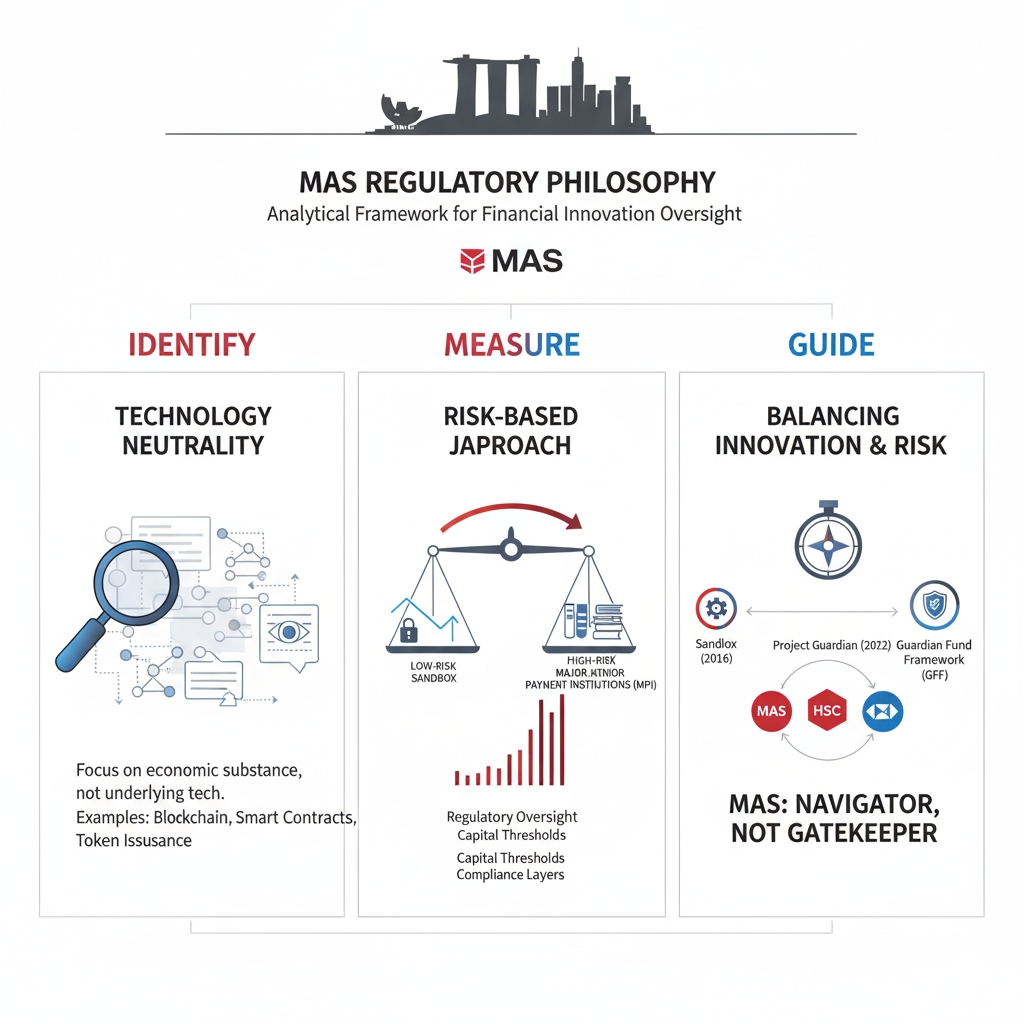
In summary, Singapore's regulatory system for digital assets is a perfect combination of its national fintech strategy and its mature regulatory philosophy. The principle of technological neutrality serves as the boundary of regulation, defining "what to regulate"; the risk-based principle serves as the intensity of regulation, determining "how to regulate"; and the principle of balancing innovation and risk serves as the direction of regulation, indicating "why to regulate." These three cornerstones support each other and are logically coherent, together forming a regulatory framework that is both strict and flexible, both prudent and forward-looking. A profound understanding of this "MAS thought model" is key for all market participants to formulate long-term strategies and achieve compliance success within the Singapore ecosystem.
1.3 Strategic Transformation from "Center" to "Hub"
"Behind the bustling TOKEN2049 and the Asian Web3 frenzy, is Singapore really still that 'paradise' open to all cryptocurrency participants?" The answer is no. There is a profound disconnect between the surface phenomenon and the national strategy.
We need to clarify: Singapore is no longer the crypto "paradise" that welcomes all participants. The country is undergoing a profound "strategic shift": consciously abandoning the goal of becoming a "trading center" marked by trading volume and project quantity, which accommodates retail speculation, and instead fully striving for dominance as a high-value "strategic hub" led by rule-making, technical standards, and institutional-grade applications. This is not a simple policy adjustment but a bold and irreversible strategic choice catalyzed by crisis.
The catalyst for this transformation was the global "Lehman moment" triggered by the collapse of major crypto institutions like Three Arrows Capital and FTX at the end of 2022. These events acted like a prism, brutally reflecting the enormous risks associated with tying national reputation to an open yet chaotic "marketplace."
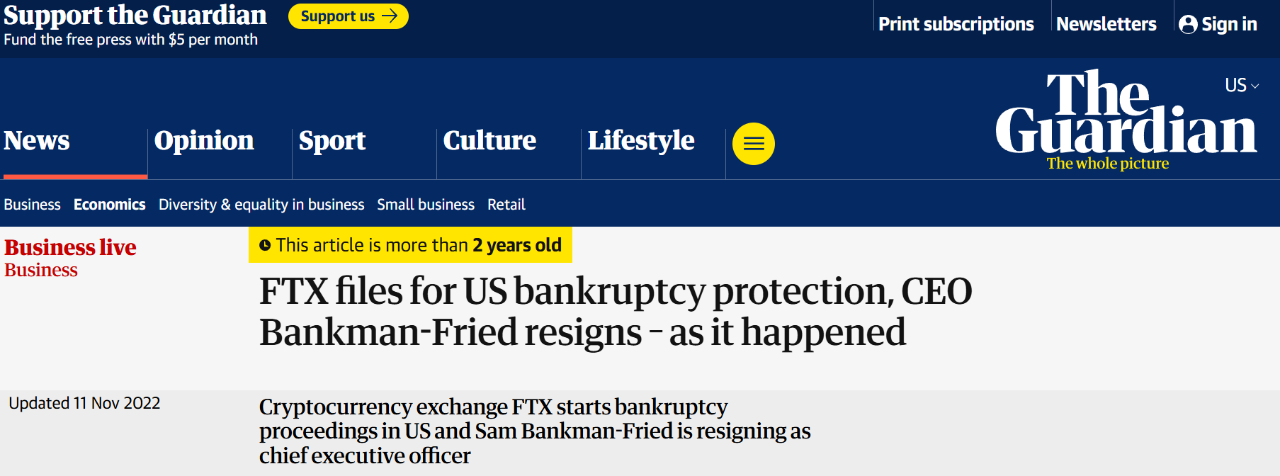
When the collapse of FTX directly threatened Singapore's reputation as a top financial center, even causing losses to its sovereign wealth fund Temasek, the strategic turning point had arrived. MAS's response was not panic but a series of calm and decisive strategic responses based on its core regulatory philosophy. Measures such as restricting retail advertising, mandating customer asset segregation, and prohibiting retail lending were quickly constructed as defensive fortifications.
The most decisive step was the introduction of a licensing system for digital token service providers (DTSP) through the Financial Services and Markets Act (FSMA), requiring all crypto service providers registered or operating in Singapore, regardless of where their customers are located, to obtain a license by June 30, 2025. This regulation completely ended the regulatory arbitrage path of "registering in Singapore and serving overseas customers."
A series of actions collectively constituted a proactive and managed strategic abandonment—Singapore has clearly recognized that the reputational risks associated with managing a chaotic "marketplace" far outweigh the benefits.
However, a strategic withdrawal from one battlefield is precisely to launch a full-scale offensive on another, more decisive battlefield. While actively tightening the gates on retail speculation, Singapore is doubling down on all the strategic space and policy resources it has freed up to build its new role as a global "hub for institutional innovation and governance."
The material embodiment of this new role returns to its flagship project, Project Guardian. This initiative, led by MAS, brings together global financial giants such as JPMorgan, DBS Bank, HSBC, Standard Chartered, UBS, and international rating agency S&P Global, with its core focus on the tokenization of real-world assets (RWA).
Singapore's ambition goes beyond mere participation in innovation; it aims to set the "rules of the game" for the future of the digital finance world. Through Project Guardian, it is actively establishing a Common Trust Layer, using Trust Anchors (i.e., regulated financial institutions) to screen and verify participants in DeFi protocols. At the same time, MAS has jointly released industry blueprints such as the Guardian Fund Framework (GFF) and the Guardian Fixed Income Framework (GFIF) with the industry, setting standards for the interoperability of tokenized assets.
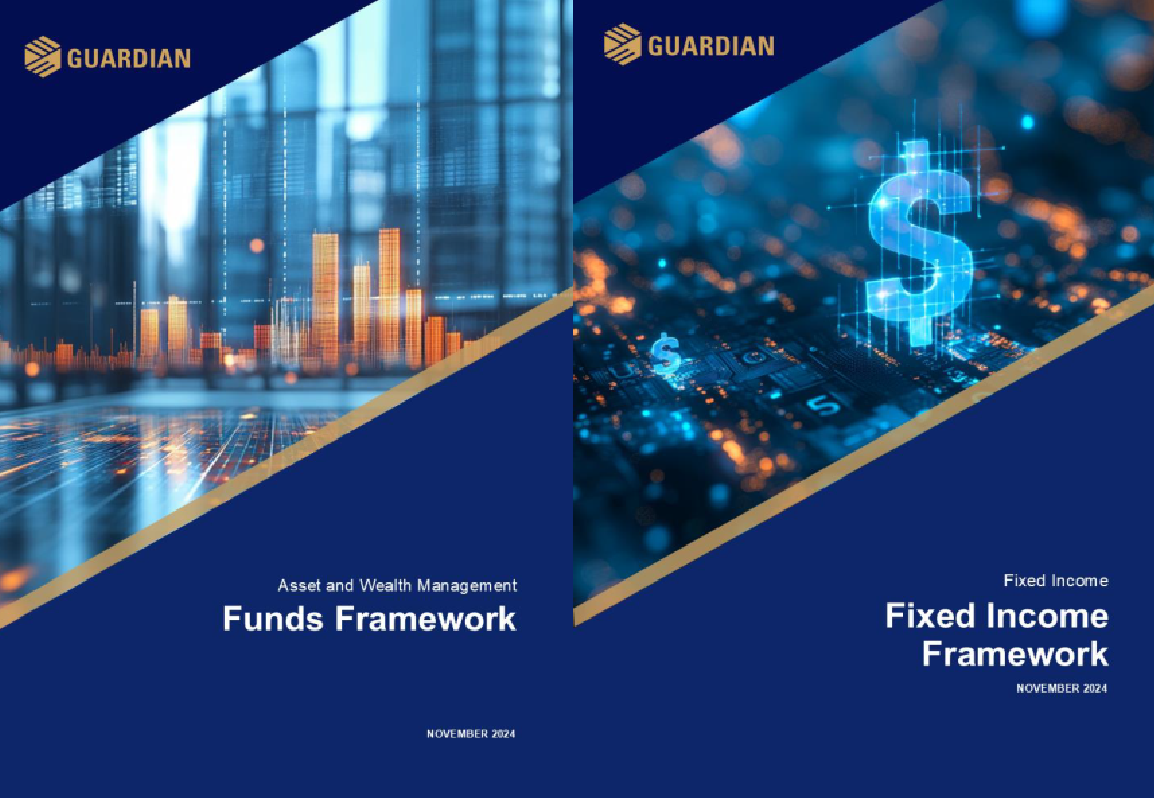
Meanwhile, the stringent requirements for the DTSP license (such as compliance with rigorous Technical Risk Management (TRM) requirements, customer asset segregation, and a preference for local substantive operations and "institutional DNA") are forging the "Singapore license" into a gold standard of credibility in the global digital asset space. Its comprehensive legal framework and efficient judicial system, particularly the globally renowned Singapore International Commercial Court (SICC), lay the foundation for it to become the preferred arbitration venue for resolving complex digital asset disputes.
This approach of "promoting institutional innovation while suppressing retail speculation" is the strongest proof of the MAS regulatory philosophy analyzed in the previous chapter. It embodies the principle of "balancing innovation and risk control," clearly encouraging "good innovation" through proactive exploration models like Project Guardian, while resolutely isolating high-volatility speculative activities from the mainstream financial system.
Singapore's strategic transformation in digital assets represents a profound change where "quality" replaces "quantity." It willingly abandons its status as a "marketplace" (trading center) open to all, as this model brings uncontrollable risks. Instead, it is committed to becoming a "central bank club" (strategic hub) that, while having high entry barriers, has clear rules and serves the world's top financial players. This "hub" will focus on setting technical standards for the future digital finance world through projects like Project Guardian, establishing legal authority, and transforming the "Singapore license" into the highest credibility label in the global digital asset arena. This core argument provides a unified strategic perspective for understanding Singapore's seemingly complex regulatory actions.
Part Two
Singapore's Legal and Judicial Ecosystem
After clarifying "why" Singapore is undergoing a grand strategic transformation from "center" to "hub" in the first part, we will now delve into the "engine room" of its regulation, analyzing the legal and institutional foundations of how it achieves this strategy. At the heart of it all is the Monetary Authority of Singapore (MAS).
2.1 Key Regulatory Unit
In Singapore's financial regulatory landscape, the Monetary Authority of Singapore (MAS) plays a core role in central banking and financial regulation. Its regulatory coverage is broad and carries significant authority, but it still collaborates with judicial institutions, tax authorities, data protection regulators (such as the PDPC), and others on specific matters. Established in 1971, MAS combines various functions including banking, finance, and financial management. Unlike the multi-headed regulatory systems of many countries (for example, China's segmented "one body, multiple heads" system), MAS has a unique integrated structure that encompasses central banking, comprehensive financial regulation, and financial development functions. This "trinity" design is not merely a functional overlay but the source of Singapore's efficient, coherent, and powerful regulatory capability. It forms a strategic "flywheel" that interlocks and accelerates, enabling systematic industry shaping and risk management in the digital asset space.

The initial thrust of the flywheel comes from MAS's most distinctive function as a financial development promoter. MAS aims to position Singapore as a leading international financial center, thus actively taking on the role of an industry shaper rather than a passive risk manager. It is this developmental function that explains why MAS invests heavily through the Financial Sector Technology and Innovation (FSTI) program (the latest FSTI 3.0 plan even allocates an additional S$100 million to support quantum and AI fields), transforming the Singapore FinTech Festival (SFF) into a global strategic platform and personally leading Project Guardian to test asset tokenization in collaboration with industry giants like JPMorgan and HSBC. These actions inject powerful innovative momentum into the entire system.
However, this ambition for development inevitably requires a similarly robust regulatory framework to safeguard it, which activates the second gear of the flywheel—MAS's role as a comprehensive financial regulator. The comprehensiveness of its regulatory scope (covering all financial sectors including banking, insurance, securities, and payments) brings significant advantages of "seamless regulation," effectively avoiding a "regulatory vacuum" for crypto assets. A digital asset project, regardless of how novel its technology is, will inevitably fall under MAS's jurisdiction: if its tokens are used for payments, they are regulated under the Payment Services Act (PSA); if they possess the attributes of capital market products (i.e., RWA), they are regulated under the Securities and Futures Act (SFA). This certainty delineates a clear and solid channel for innovation, ensuring that its energy does not overflow. Furthermore, with the passage of the Financial Institutions (Miscellaneous Amendments) Act (FIMA) by the Singapore Parliament, MAS's investigative and regulatory powers in six major financial areas are continuously being upgraded.
Ultimately, all these developmental and regulatory actions must serve the flywheel's final anchor and brake—MAS's core mission as a central bank. MAS is responsible for maintaining the stability of the Singapore dollar (SGD), managing the national foreign reserves, and promoting non-inflationary economic growth. It is this ultimate mission that keeps it highly vigilant against speculative activities in cryptocurrencies that may impact the monetary system, guiding it to strategically "promote institutional innovation while suppressing retail speculation." This vigilance is also reflected in its stringent regulation of stablecoins: for single-currency stablecoins (SCS), MAS has set extremely high reserve and redemption requirements, including that the total value of its reserve assets must not be less than 100% of the total circulation, must be redeemable at face value within five working days, and the reserve assets must be completely segregated from the issuer's own assets. This final benchmark ensures that the entire flywheel operates with national financial stability as the highest priority.
The grand strategic flywheel is not mere talk; it relies on a set of highly specialized internal gears for precise transmission. Innovative projects first knock on the door of MAS's "innovation front desk"—the Financial Technology and Innovation Division, which is responsible for promoting the FSTI program and managing the regulatory sandbox. Once the direction is clear, the projects are accurately directed to two core engines: the Payments Division, responsible for the PSA "firewall," or the Capital Markets Division, which builds the SFA "bridge to the future." Ensuring that the entire machine operates with discipline and order is MAS's "sharp teeth"—the Enforcement Division, whose powers have been significantly enhanced with the passage of the FIMA bill.
The Monetary Authority of Singapore (MAS) is unique in the global financial arena. It is a single authority that integrates strategic formulation, industry promotion, and strict enforcement. Its "trinity" structure allows it to transcend traditional regulatory roles and actively shape the future landscape of digital finance. MAS formulates forward-looking strategies through its development functions, precisely delineates compliance boundaries through its regulatory functions, and ensures financial stability and international reputation through its central banking functions and strong enforcement powers. A profound understanding of this integrated, efficiently operating "regulatory machine" of MAS is the core prerequisite for all market participants to achieve long-term, sustainable development within Singapore's digital asset ecosystem.
2.2 Firewall and Bridge to the Future
The solid foundation of Singapore's digital asset regulation relies on the two pillars of the Payment Services Act (PSA) and the Securities and Futures Act (SFA), as well as its carefully constructed "dual legal structure" that is both offensive and defensive.
The function of the PSA is to build an impenetrable "firewall," strictly regulating digital payment tokens (DPT) and their service providers, isolating the highest-risk aspects of retail cryptocurrency activities—primarily anti-money laundering and counter-terrorism financing (AML/CFT)—within a rigorous compliance framework.
The mission of the SFA, on the other hand, is to construct a "bridge" to a institutionalized future, providing a clear, compliant legal track that seamlessly connects to the traditional financial world for next-generation financial innovations represented by institutional-grade tokenization of real-world assets (RWA). It is this clearly defined division of labor and strong collaboration that enables Singapore to boldly lead institutional innovation while upholding the integrity of its financial system.
Strategic Depth of the Payment Services Act (PSA)
Effective from January 2020, the Payment Services Act (PSA) is at the core of Singapore's defensive strategy. Behind the seemingly plain legal definition of DPT lies MAS's "scalpel-like" regulatory wisdom.
It defines DPT as a digital representation intended to serve as a medium of exchange, but whose value is not pegged to any legal tender. This precise definition allows it to clearly bring mainstream cryptocurrencies like Bitcoin and Ethereum under regulation while cleverly excluding platform-specific or game-internal functional tokens or points with extremely limited functionality, avoiding a "one-size-fits-all" approach that stifles all innovation. This also accurately reflects MAS's regulatory philosophy of concentrating regulatory efforts on high-risk payment activities, rather than the technical forms or functional sets of tokens, leaving room for innovation for low-risk, functionally limited tokens.
The extensive regulatory network of the PSA is evident in its comprehensive definition of seven core payment activities.
The seven types of regulated payment services include:
Account issuance service
Domestic money transfer service
Cross-border money transfer service
Merchant acquisition service
E-money issuance service
Digital payment token service (DPT Service)
Money exchange service
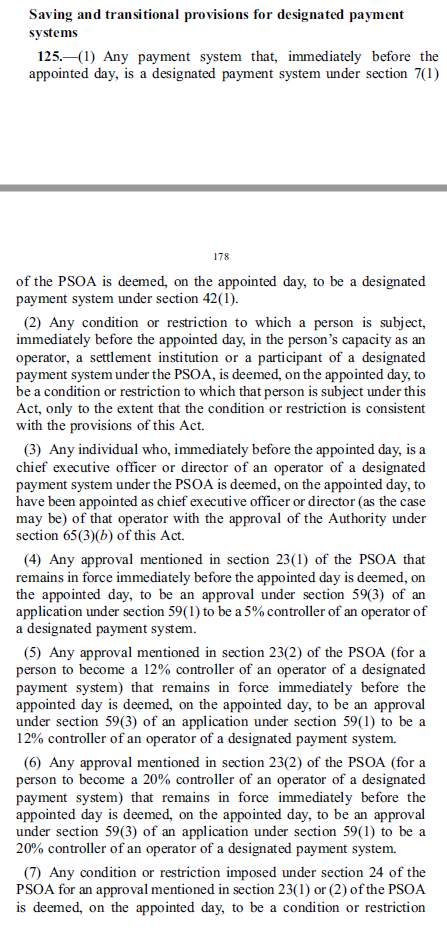
It not only encompasses the cornerstones of traditional payments such as account issuance and domestic and foreign remittances but also precisely targets the heart of the crypto economy—the Digital Payment Token (DPT) service itself. This means that whether it is exchanges, wallet service providers, or OTC platforms, their core businesses—buying, selling, transferring, or custodial services for DPT—inevitably fall under this legal framework. Moreover, this legal framework is continuously being reinforced: the 2021 PSA amendment explicitly brought DPT custody and transmission services under regulation; the Financial Services and Markets Act (FSMA) introduced the DTSP license, which thoroughly fills the gaps in cross-border regulation, compressing the space for regulatory arbitrage to the limit.
The brilliance of this licensing system lies in its deliberately created tiered thresholds, functioning like an efficient "filter" that actively shapes the market structure.
Under the PSA framework, there are three types of licenses: Money Changer License, Standard Payment Institution License (SPI), and Major Payment Institution License (MPI). Among them, SPI and MPI are the main license categories for Digital Payment Token Service Providers (DTSP). For the relatively small-scale Standard Payment Institutions (SPI), the regulation only sets a basic capital threshold of S$100,000. However, once the business scale reaches the threshold of S$3 million per month, the path to becoming a Major Payment Institution (MPI) suddenly narrows, and the intensity of regulation undergoes a qualitative change, with capital requirements jumping to S$250,000. But this is merely the entry ticket. More importantly, MPI is mandated to comply with a set of stringent regulations aligned with mainstream financial institutions: from the hard indicators of the Technical Risk Management Guidelines (TRM) to the statutory trust segregation of customer assets, and the rapid reporting mechanism for significant events.
Each of these regulations clearly announces MAS's preferences to the market: what it seeks are long-term players with strong capital strength, comprehensive risk control systems, and "institutional DNA." It also sends a clear signal to the market: Singapore welcomes responsible and capable institutions that can fulfill regulatory obligations, rather than mere speculators pursuing short-term profits.
Therefore, the strategic significance of the PSA far exceeds merely meeting the FATF's AML/CFT requirements. Through strict customer due diligence (such as MAS PSN 02 notification) and adherence to the "travel rule," it has built a "firewall" to isolate money laundering and terrorism financing risks in Singapore. The effective operation of this firewall defends Singapore's AAA-rated reputation as a top international financial center, and this high level of credibility is the trust foundation for developing institutional-grade applications.

Moreover, MAS's meticulous categorization of these activities reflects a modular design of regulation. This design allows regulation to evolve flexibly; for example, the Financial Services and Markets Act (FSMA) further fills the cross-border regulatory gaps left by the PSA by bringing entities registered in Singapore that only serve overseas clients under regulation, thus closing the space for regulatory arbitrage. This precise delineation and integration reserve clear "interfaces" for future adjustments to regulatory boundaries as needed.
Strategic Vision of the Securities and Futures Act (SFA)
However, defending the walls is only half of the strategy; the other half lies in taking proactive steps to build bridges to the future. When the economic substance of a digital token transcends its role as a payment tool and possesses investment attributes, the baton of regulation is handed over to the Securities and Futures Act (SFA).
How does MAS determine the "soul" of a token—whether it is a payment tool or an investment contract? It relies not on technical labels but on a set of penetrative analytical methods based on "economic substance," with the authoritative guide being the Digital Token Issuance Guidelines.
If a token grants its holder ownership, debt rights, profit-sharing rights, or similar economic interests (for example, representing a share or dividend rights, or a unit of a collective investment scheme), then regardless of its external form, it will be recognized as a "capital market product" under the SFA.
This flexibility based on case analysis allows MAS to regulate any security-like tokens disguised through technology, including cutting-edge RWA tokenization products. Once classified, their issuance must comply with the strict requirements of the SFA regarding prospectuses or follow a compliance issuance path through exemptions for institutions and accredited investors.
The SFA, which existed before the concept of "cryptocurrency" emerged, perfectly serves as the cornerstone for regulating cutting-edge innovations like RWA, reflecting the power of MAS's "technology neutrality" principle.
The SFA regulates the financial activities themselves rather than the technical forms, enabling it to adapt to changes and provide a mature, certain, and reliable legal track for the new generation of financial products—this is precisely what institutional investors crave.
RWA is essentially a mapping of traditional securities on the blockchain, and the SFA provides a seamless legal basis for it, avoiding the lengthy and uncertain process of establishing new laws. MAS is also actively exploring how to build an open and interoperable tokenization network within the SFA framework through projects like Project Guardian, aiming to seize the high ground of the next-generation financial market infrastructure (FMI).
Dual Structure of Offense and Defense
The PSA and SFA together form a solid foundation for Singapore's digital asset regulatory system, executing the national strategy in a highly coordinated manner. The PSA establishes a "firewall" that isolates high-risk retail crypto activities within safe boundaries through strict AML/CFT and TRM standards, maintaining Singapore's financial credibility. The SFA builds a "bridge to the future," providing a certain and compliant legal track for high-value institutional innovations like RWA and tokenized securities.
There exists a profound causal relationship between the two. The strong execution of the PSA (especially the FSMA closing cross-border arbitrage loopholes) is a necessary prerequisite for the success of the SFA. Only by demonstrating the ability to defend the purity of the financial system and uncompromisingly enforce anti-money laundering rules can Singapore earn the trust of the world's most conservative and cautious institutional capital. Only when the "firewall" is unassailable will institutional investors dare to and be willing to step onto this "bridge" to the future.
2.3 How Do the Two Laws Interact?
After clearly analyzing Singapore's two legal pillars, the real challenge emerges: In the real world, these two distinctly defined legal tracks often intersect in the ambiguous territory of "hybrid tokens" that possess multiple attributes. Identifying and addressing this intertwining is key to a project's successful compliance in Singapore.
This requires us to move beyond a static understanding of legal texts and grasp MAS's dynamic regulatory thinking of "technology neutrality" and "substance over form." To this end, let us conduct a thought experiment.
Let us consider a complex sample that tests regulatory wisdom:
A hybrid token named "Ecosystem Governance and Payment Token" (EGPT). Within its associated DeFi platform, EGPT is assigned a dual mission: first, it has payment functionality, allowing users to pay platform service fees and use it as a medium of exchange with merchants within the ecosystem; second, it carries governance and profit-sharing functions, enabling holders to participate in platform governance voting through staking and receive dividends from the platform's net transaction fees regularly.
Faced with such a "dual-natured" digital asset, how should we determine its legal identity?
First, let us put on the "lens" of the PSA to examine it. From this perspective, EGPT is intended and actually used for payments, with one of its core functions being as a medium of exchange, and its value is decoupled from any legal tender. This undeniably places it within the PSA's definition of Digital Payment Tokens (DPT). Furthermore, if the platform operating this token provides services such as buying, selling, custody, or fiat exchange, then the platform must apply for a PSA license (SPI or MPI) for the buying or trading services of the EGPT token (DPT services), custodial services (such as wallet custody), exchange services between fiat and EGPT, or involving cross-border transfer services (for example, customers purchasing EGPT with fiat). It must also comply with stringent regulations regarding anti-money laundering and payment risks.
However, if we approach it from the perspective of the SFA, the situation may become even more interesting. The SFA focuses on the economic substance of the token, penetrating its payment facade to examine the substance of the economic rights it grants to holders. MAS clearly states in its Digital Token Issuance Guidelines that the core of the judgment lies in the rights conferred by the token.
2.2 MAS will examine the structure and characteristics of, including the rights attached to, a digital token in determining if the digital token is a type of capital markets products under the SFA.
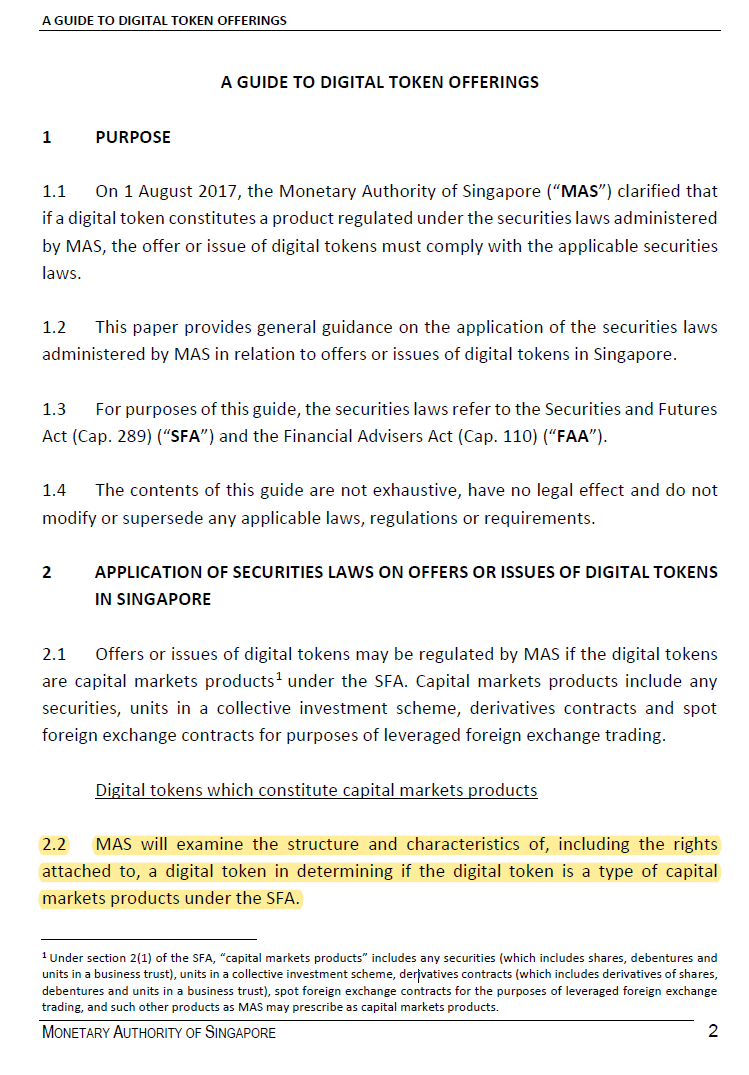
EGPT grants its holders the right to share in the platform's future profits. According to the SFA's guiding principles, if the token represents equity or debt in a company or constitutes a unit of a Collective Investment Scheme (CIS), it will be regarded as a security-type token (i.e., CMP).
In this case, if the platform pools users' staked EGPT funds to be managed and invested by the platform (or its affiliated entities) with the aim of allowing token holders to share in operational or investment profits, then EGPT is very likely to be deemed as constituting a unit of a Collective Investment Scheme (CIS).
When the observations from the two "lenses" overlap, one conclusion emerges: EGPT will be subject to "dual regulation."
This is not a laughing matter for the project team. It is far from a simple legal label; it initiates a compliance storm with sharply rising costs and complexities.
First is the "dual threshold" for license applications: the project team not only needs to apply for a PSA license for DPT services to regulate its DPT services (such as wallet custody, cryptocurrency exchange, or trading services). If the business transaction volume exceeds S$3 million per month or the total transaction volume exceeds S$6 million per month, it will need to apply for an MPI license;
It may also need to apply for a Capital Markets Services (CMS) license for the trading of security-type tokens to regulate its capital market product-related services. If the platform provides services involving EGPT trading, offers related investment advice, or operates a trading platform for security-type tokens, it will need to hold the corresponding Capital Markets Services (CMS) license, such as the CMS license for dealing in capital markets products, or operate a certified Recognized Market Operator (RMO) license.
But this is just the beginning; the real challenge lies in the endless "dual-track" compliance in operations. The project team must simultaneously meet the requirements of two different legal systems: complying with the stringent regulations on customer due diligence (CDD), asset segregation, and technical risk management (TRM) under the PSA framework, while also fulfilling the complex obligations regarding prospectuses, information disclosure, and investor suitability assessments under the SFA framework.
Under this immense compliance pressure, the project team must make fundamental strategic choices at the very beginning of the token economic model (Tokenomics) design, which is the value of this case.
One path is to strip away the securities attributes, for example, completely eliminating the rights to dividends or profit sharing, limiting the token's function to a pure utility token to avoid triggering SFA jurisdiction. MAS clearly states in A Guide to Digital Token Offerings that if a token only grants access/use rights without providing economic returns (such as ownership, dividends, or profit distribution), the risk of being classified as a security is lower; however, whether it constitutes a capital market product still requires case-by-case analysis based on the economic substance of the token, and it is recommended to obtain legal opinions based on the specific token structure.
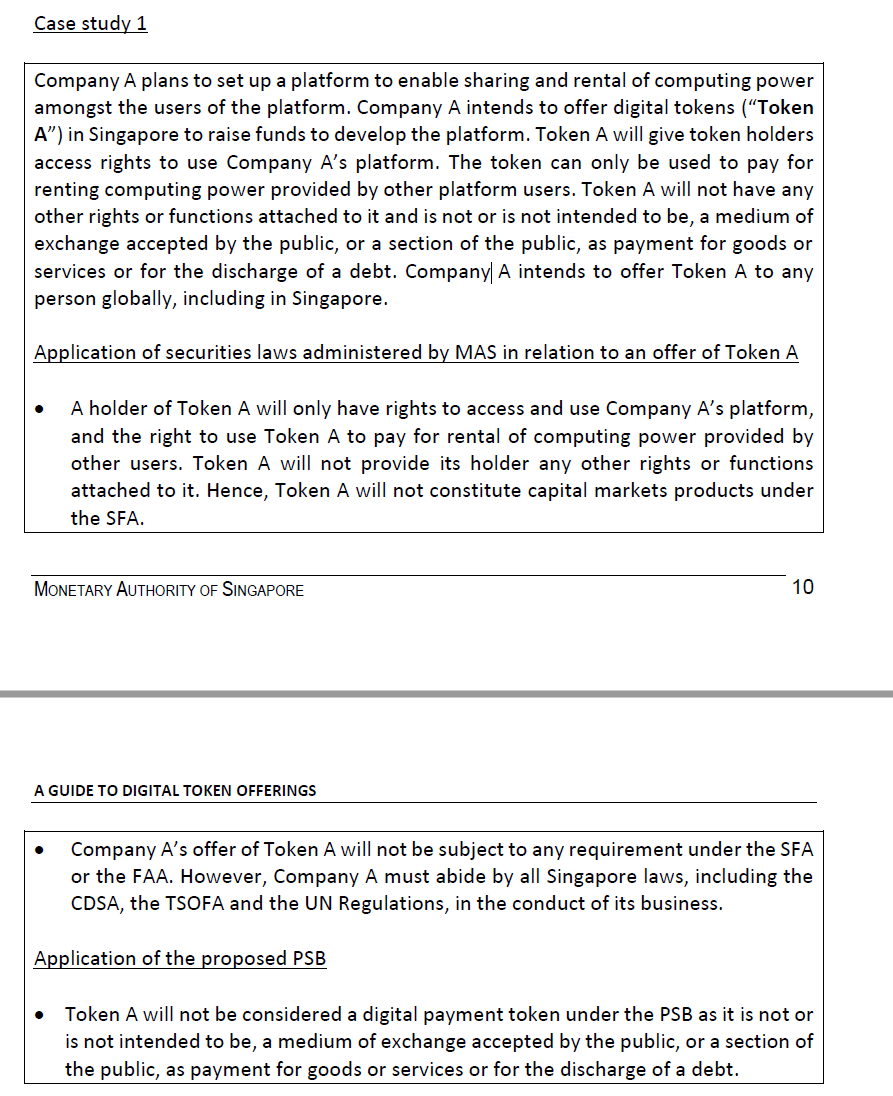
The other path is to embrace the institutional route, strictly limiting the issuance and trading of the token to qualified and institutional investors, thereby utilizing the SFA's exemption clauses to avoid the heaviest compliance obligations when targeting the retail market.
Therefore, this case can distill a fundamental self-assessment framework for all market participants. Before entering the Singapore market, one must interrogate the project's two core aspects: first, the "soul" of the token—what is its core function, payment, investment, or merely access rights? Does its value support stem from market fluctuations, or is it firmly tied to the issuer's future profits? Second, the "behavior" of the operation—does the business model touch upon the payment service red line defined by the PSA? Does the marketing promotion cross the boundaries aimed at retail investors? Clear answers to these two dimensions will ultimately determine a project's fate in Singapore: whether it falls into the quagmire of "dual regulation" or finds a clear path to compliance, entirely depends on its strategic choices.
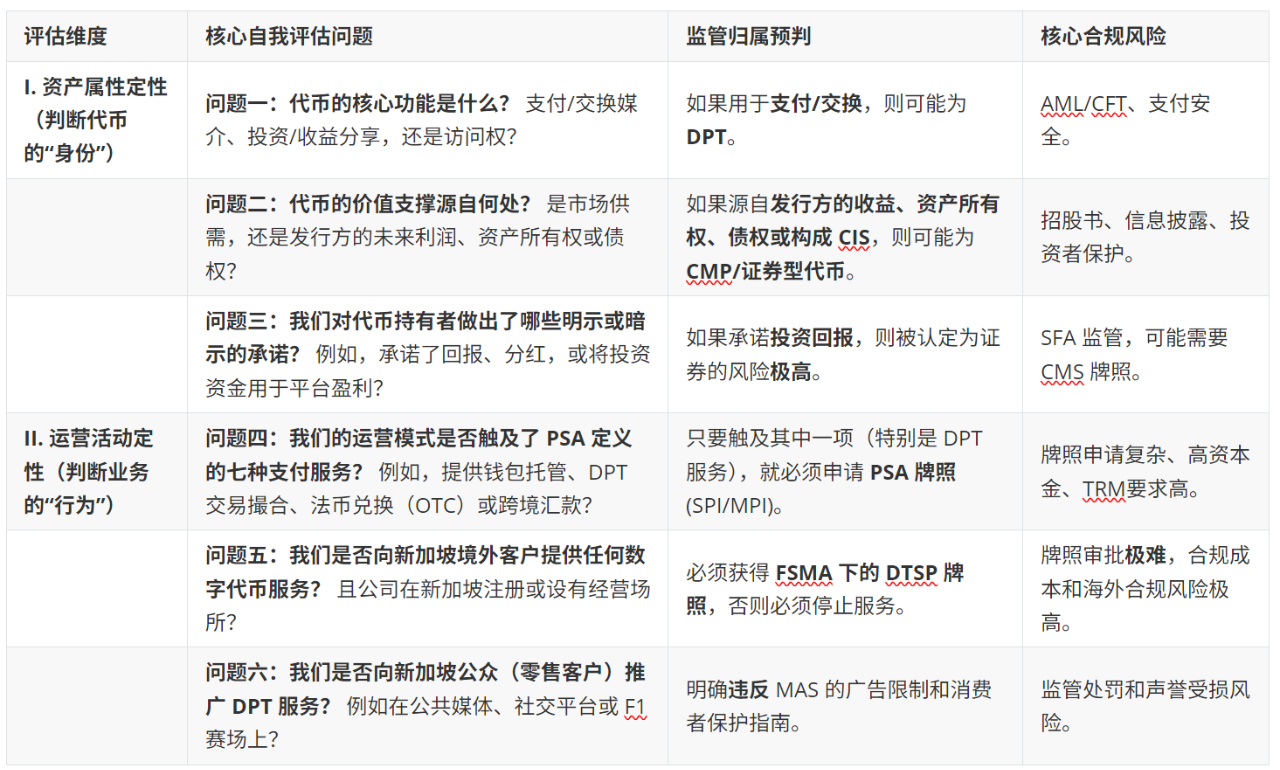
2.4 The Legal Matrix Comprising the Compliance Puzzle
In Singapore, successfully obtaining a license under the Payment Services Act (PSA) or the Securities and Futures Act (SFA) merely means gaining entry qualifications. The real test lies in how to survive and develop in the long term within the complex "legal matrix" composed of multi-dimensional regulations, including operations, data, corporate, tax, and even criminal law. This matrix "translates" high-level regulatory principles into daily operational requirements, backed by severe personal and criminal liabilities, ensuring that compliance is no longer a "checkbox" game but a core element of business operations.
This compliance test begins at the front line of business operations. Here, MAS transforms abstract principles into concrete battle manuals through the issuance of legally binding Notices and regulatory benchmark Guidelines.
In the trenches of anti-money laundering (AML/CFT), compliance officers must adhere to MAS PSN02 Notice: On Preventing Money Laundering and Combating Terrorism Financing—Digital Payment Token Service Providers:
Customer Due Diligence (CDD) and Enhanced Due Diligence (EDD): The MAS PSN02 Notice requires DPT service providers to adopt a risk-based approach (RBA) and implement strict customer due diligence (CDD) procedures. For example, MAS Notices on AML/CFT require financial institutions to perform appropriate CDD measures on existing customers while considering self-assessments of significance and risk. Additionally, for customers with whom a business relationship has not yet been established, if the transaction amount exceeds S$5,000, the payment service provider must execute the prescribed CDD measures.
Transaction Monitoring and Suspicious Transaction Reporting (STR): MAS Notices require financial institutions to develop and implement internal AML/CFT policies, procedures, and controls, which include the obligations to detect suspicious transactions and report suspicious transactions. Institutions must establish infrastructure to submit suspicious transaction reports (STR) to the Suspicious Transaction Reporting Office (STRO) under the Commercial Affairs Department of the Singapore Police Force and send a copy to MAS for record-keeping. According to MAS PSN03 Notice, upon discovering any suspicious activities or fraudulent incidents, if such activities or incidents are critical to its security, robustness, or reputation, a report must be submitted to MAS no later than five working days.
Resource Investment: Notices like PSN02 impose requirements for transaction monitoring, KYC, and data recording, meaning that the project team must make significant resource investments in compliance teams, technical systems (such as the selection of KYC/KYT vendors), and internal audit processes. For DPT service providers, if during the course of conducting designated payment services, they process, accept, or execute payment transactions that involve cash payments to any payee equal to or exceeding S$20,000, they are prohibited from doing so.
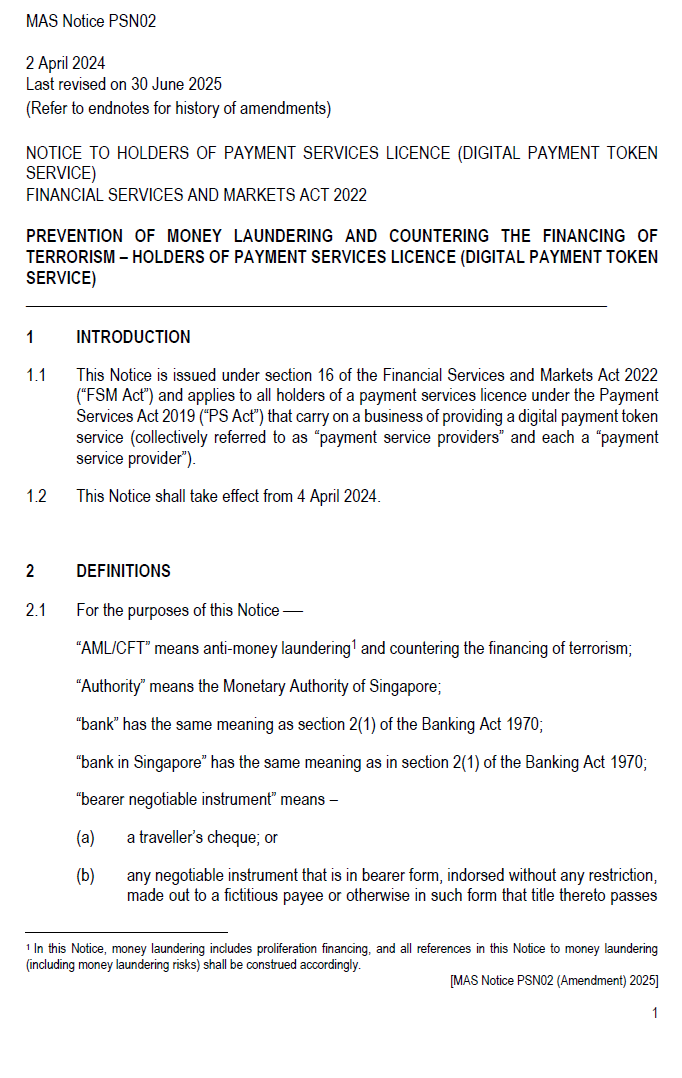
Meanwhile, in the fortress of technical risk, the Chief Technology Officer (CTO) and Chief Information Security Officer (CISO) must adhere to the Technical Risk Management Guidelines (TRM Guidelines) and the Cyber Hygiene Notice. MAS clearly states that while the TRM guidelines are not legally binding, they will serve as a benchmark for MAS to assess the risks of financial institutions, meaning that the robustness of the technical architecture itself is one of the core elements of compliance. It also means they must ensure that at least once every 12 months, penetration testing is conducted on internet-facing systems and have the capability to report significant security incidents within one hour. MAS has also issued a notice on cyber hygiene, effective August 6, 2020, aimed at encouraging financial institutions to take adequate measures to protect themselves from increasingly prevalent cyber risks. These two documents, along with many notices, collectively constitute the "daily war" of compliance, infusing regulatory intent into every transaction and every line of code.
The massive amounts of data generated and processed by operations immediately trigger the second layer of tension within the compliance matrix: the inherent conflict of data. On one hand, AML/CFT regulations require enterprises to collect and retain as much customer data as possible for verification; on the other hand, Singapore's Personal Data Protection Act (PDPA) imposes strict constraints on data collection based on the core principles of "data minimization" and "purpose limitation."
This natural "tug-of-war" forces enterprises to walk a tightrope between satisfying regulatory scrutiny and protecting user privacy, designing sophisticated internal data governance policies, access controls, and retention strategies, where any misstep could lead to hefty fines of up to S$1 million or 10% of annual turnover.
Subsequently, the chain of compliance responsibility ruthlessly penetrates from data centers and server rooms up to the pinnacle of power—the board of directors. In Singapore, corporate law is closely linked with financial regulation, and the responsibility for compliance ultimately "presses" on every director and executive's shoulders. MAS's "Guidelines on Fit and Proper Criteria" [FSG-G01] explicitly require assessments of key personnel, including directors and the CEO, considering factors such as honesty, integrity, reputation, capability, and competence, as well as the "time commitment" to the Singapore entity.
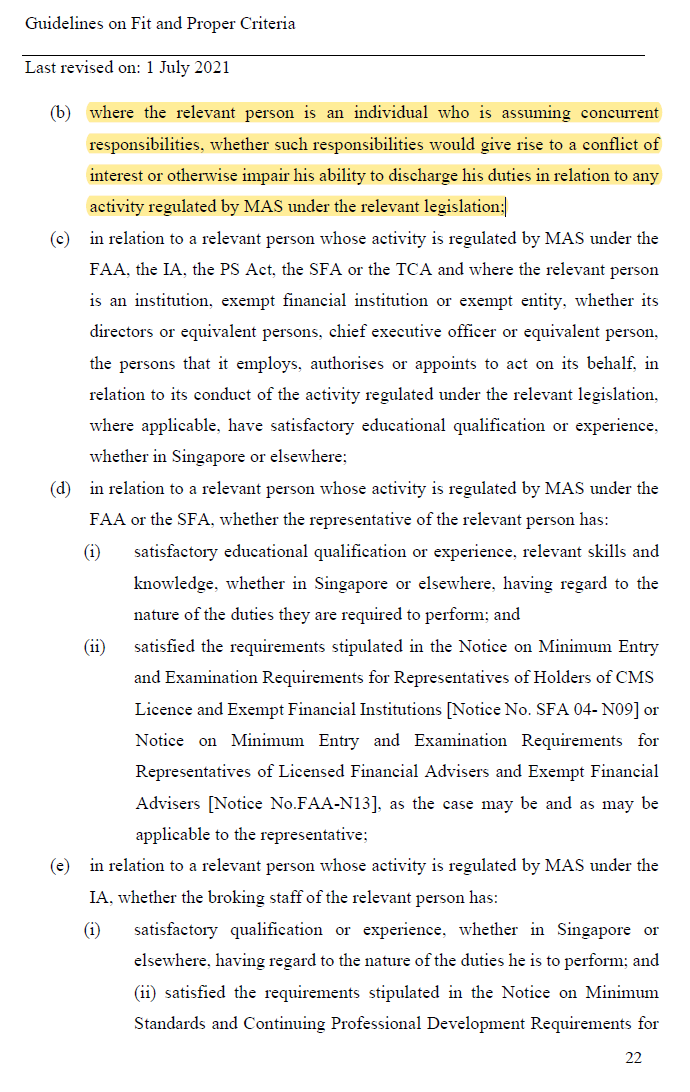
When a company is penalized by MAS for serious AML violations (such as fines, restrictions on business scope, revocation or non-renewal of licenses), its board members may face personal legal liability under Singapore's Companies Act, and even when engaging in DTSP business without a license, individuals may face fines of up to S$125,000 and up to three years of imprisonment. This mechanism of piercing the corporate veil for liability transforms compliance from a departmental responsibility into a personal, inescapable legal risk, significantly influencing the decisions of global project founders when establishing entities in Singapore. It requires founders to appoint resident local executive directors with "fit and proper" qualifications and ensure they have a thorough understanding and oversight of the company's compliance controls and risk management systems.
Subsequently, the tax dimension transforms all operational activities into specific financial costs and obligations. The Inland Revenue Authority of Singapore (IRAS) requires businesses to determine their tax liabilities based on the nature and use of their tokens (for example, whether they are held as trading inventory or for investment). For companies engaged in DPT buying and selling or trading services, the DPT they hold is generally considered trading inventory, and the related profits should be regarded as taxable income.
As for Staking rewards and Airdrops, IRAS needs to determine based on specific circumstances whether they constitute taxable income. The complex tax characterization requires businesses to consider their financial impact from the outset of their business model design and to timely declare Goods and Services Tax (GST) and income tax.
Finally, at the foundational level of the entire compliance matrix, there is an unbreachable criminal law baseline, constituted by the Corruption, Drug Trafficking and Serious Crimes Act (CDSA). This is not a daily operational guideline but the ultimate "teeth" of the entire regulatory system. When a licensed institution's compliance lapse is severe enough to be deemed as "money laundering," the CDSA will intervene, escalating an event that might have been merely an administrative penalty into a potential criminal case involving imprisonment.
The "Fujian Gang" cross-border money laundering case, exposed in 2023 with an amount involved reaching S$3 billion, precisely touched this criminal law red line and directly catalyzed MAS's urgent tightening of DTSP regulation. It starkly demonstrates the absolute deterrent power of this baseline.
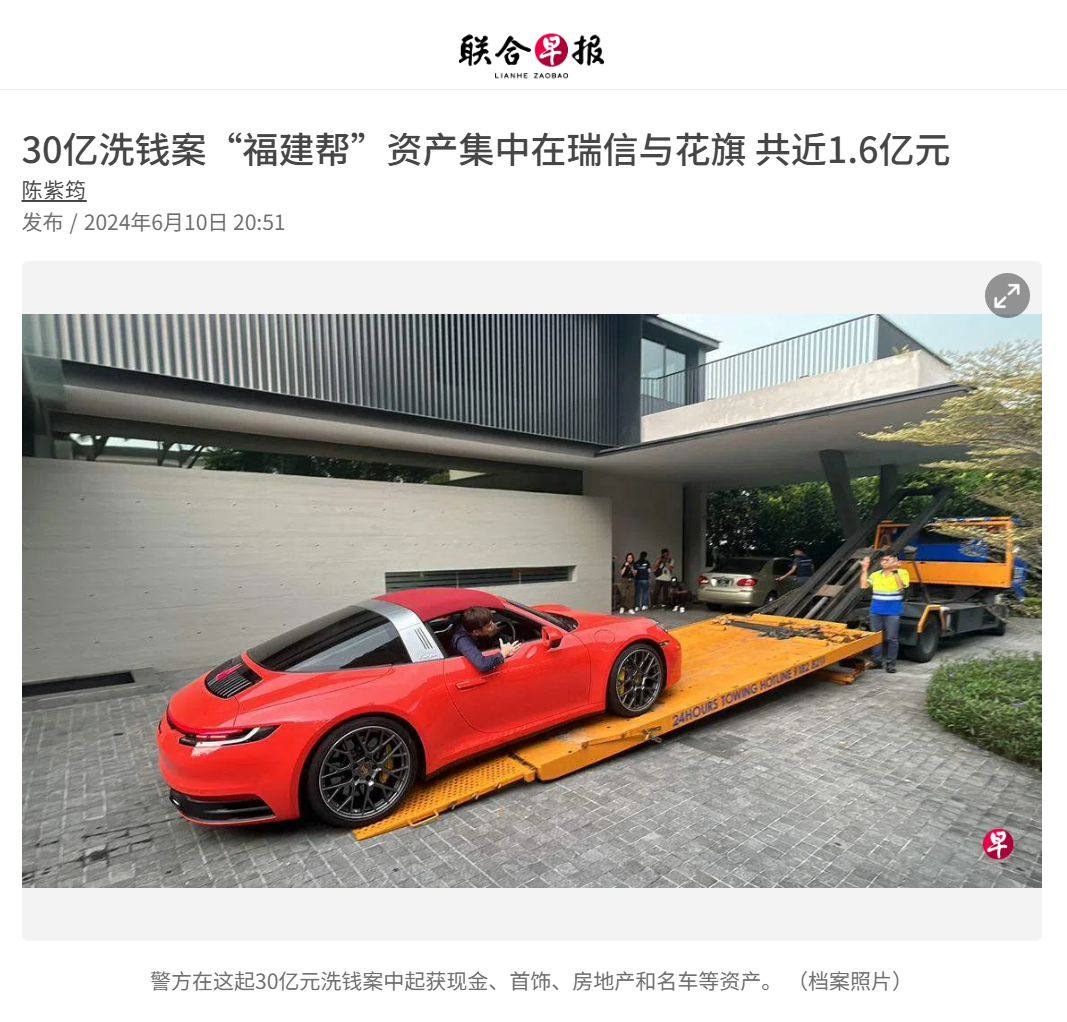
In summary, Singapore's compliance system is not a flat legal checklist but a three-dimensional, interlocking legal matrix. Centered around the PSA and SFA, it defines the legal identity of enterprises; using various MAS notices and guidelines (such as PSN02, TRM) as the operational layer, it injects regulatory intent into every transaction and every line of code; and with the Personal Data Protection Act and Companies Act as flanks, it imposes constraints from the dimensions of data governance and personal liability of directors; ultimately, with the Corruption, Drug Trafficking and Serious Crimes Act (CDSA) as an indestructible cornerstone, it sets an unbreachable criminal red line. For any enterprise intending to develop long-term in this space, understanding this map and internalizing it into the enterprise's DNA is not a choice but the only path to survival.
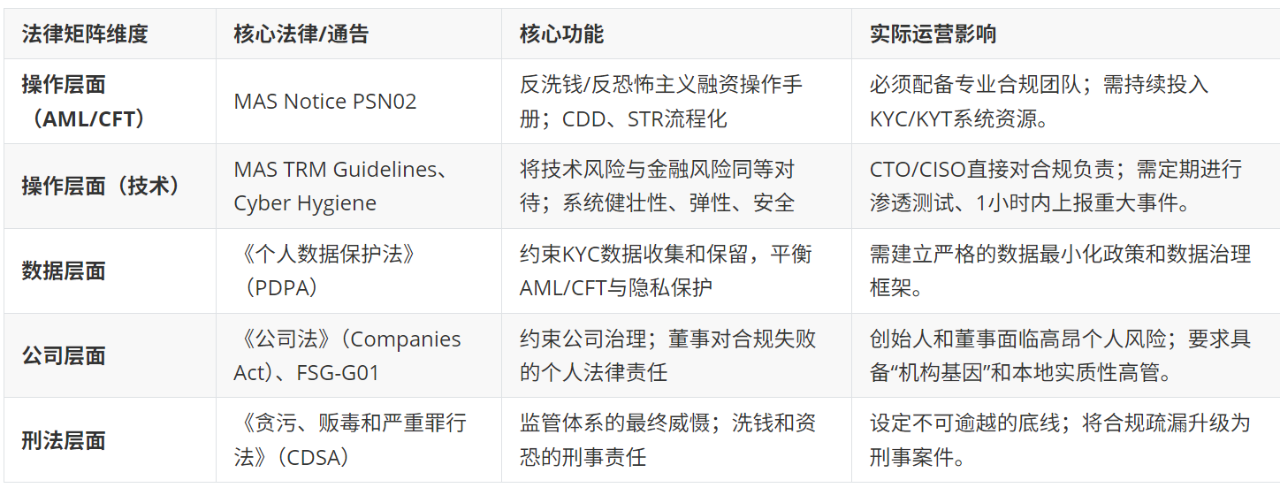
2.5 A "Pill of Assurance" Beyond Legislation
In the "lawless wilderness" of global digital assets, the greatest fear of capital stems from the absence of rules and unresolved disputes. While codified laws are undoubtedly important, what truly empowers top global institutional capital to make significant investments is a country's ability to provide certainty, finality, and globally enforceable judicial remedies after disputes arise.
This is precisely Singapore's trump card that surpasses all competitors, offering a "pill of assurance" to global capital. In the frontier industry of digital assets, characterized by cross-border nature, technological complexity, and uncertain asset characterization, the existence of the Singapore International Commercial Court (SICC) and the Singapore International Arbitration Centre (SIAC) provides invaluable assets to this chaotic world.

When it comes to assets, the first and most precious aspect is the conquest of "technological fear." When a transaction that was 250 times overpriced due to an algorithmic failure was unilaterally revoked by the cryptocurrency exchange Quoine, the entire automated trading world was watching. In the case of B2C2 Ltd v Quoine Pte Ltd SGHC(I) 03, the SICC chose not to shy away from the complexity of technology but to confront it head-on, deeply analyzing the internal logic of algorithmic trading and ultimately affirming that transactions executed through algorithms remain legally binding in the absence of evidence of contractual error.
This ruling serves as a stabilizing force, injecting contractual certainty into all code-based commercial agreements, clearly declaring to the market: In Singapore, commercial agreements reached through code and algorithms will be effectively protected under common law.
Behind this is the profound technical expertise and commercial pragmatism of the SICC and the Singapore judicial system. SICC President Philip Jeyaretnam pointed out that emerging technologies such as blockchain, artificial intelligence (AI), and cryptocurrencies bring new legal issues, and future judges must continuously learn to adapt to the challenges posed by new technologies. They are willing and able to understand the internal logic of automated trading systems, smart contracts, and DeFi protocols, rather than simply refusing to adjudicate on the grounds of "code is law" or "technological black box."
Next, Singapore's judicial system addressed another fundamental anxiety in the industry: Legally, do the digital tokens I hold count as "property"? In the case of ByBit Fintech Ltd v Ho Kai Xin SGHC 199, the court made a judicial declaration of "legislative" significance, clearly and unequivocally ruling that crypto assets (including stablecoins like USDT) are a recognizable and separable form of property that can be held in trust. The court even cited MAS's proposed amendments regarding the segregation and custody requirements for digital payment tokens, asserting that these amendments reflect the possibility of digital assets being identifiable and separable, supporting the view that they can be held in trust. The court further ruled that crypto assets constitute a chose in action.
This ruling is landmark, as it clarifies that crypto assets are legally considered property, thereby enabling digital asset owners to obtain stronger protections, such as applying for injunctions to prevent assets from being misappropriated or transferred.
The principles were quickly extended to emerging fields, as seen in the case of Janesh s/o Rajkumar v Unknown Person ("CHEFPIERRE"), where the court decisively issued a global property injunction to prevent the potential sale and ownership transfer of a Bored Ape NFT (BAYC No 2162). This series of rulings provides an unassailable legal foundation for the protection of digital asset ownership and the recovery of stolen assets, adding crucial components to this "pill of assurance."
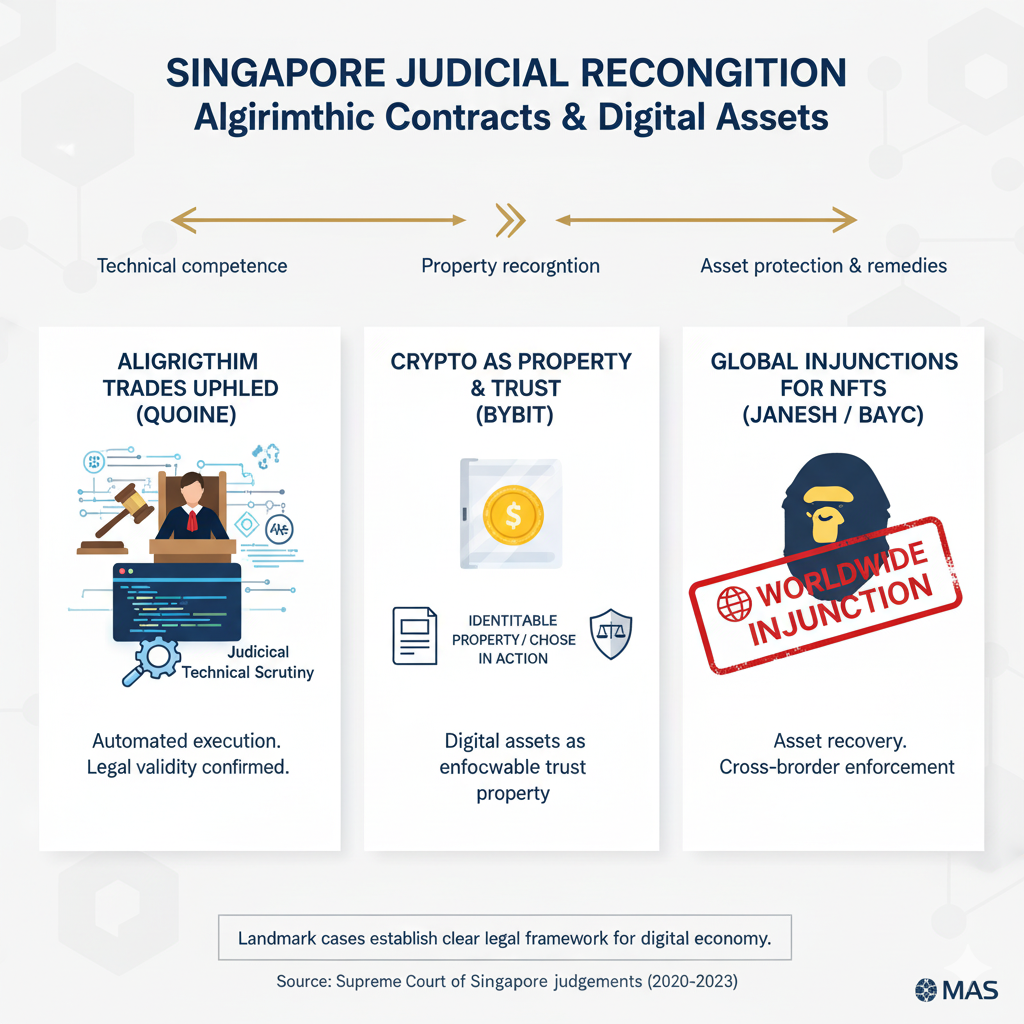
However, all these rulings would be meaningless if they cannot be enforced in the real world. This leads to the final and most critical question: Are the judgments obtained in Singapore useful overseas? At this point, Singapore's ultimate weapon is fully revealed. As a leading global arbitration institution, SIAC's rulings are recognized and enforceable in over 160 countries and regions worldwide based on the New York Convention. Meanwhile, the SICC, with its luxurious lineup of 24 international judges from major legal systems around the world, ensures that its judgments can deeply understand and address complex cross-border, cross-legal system disputes, thus possessing broad international recognition. This endows Singapore's judicial remedies with an unmatched global power—it offers not only legal victories but also enforceable power in the real world.
Thus, the full picture of the Singapore model is clearly presented before us. Its success stems from a perfect "dual assurance" system. On one hand, there is the indestructible "pre-regulatory firewall" built on the PSA, SFA, and their legal matrix, responsible for screening participants and preventing issues before they arise. On the other hand, represented by the SICC and SIAC, there is the unmatched "post-event remedy assurance", responsible for providing order and finality when chaos occurs.
It is this "legislative + judicial" dual assurance that provides global institutional capital with a complete legal sense of security throughout the entire cycle from entry to exit (dispute resolution), collectively forging Singapore's unique and hard-to-replicate core competitiveness as a global "hub for institutional innovation and governance."
免责声明:本文章仅代表作者个人观点,不代表本平台的立场和观点。本文章仅供信息分享,不构成对任何人的任何投资建议。用户与作者之间的任何争议,与本平台无关。如网页中刊载的文章或图片涉及侵权,请提供相关的权利证明和身份证明发送邮件到support@aicoin.com,本平台相关工作人员将会进行核查。




